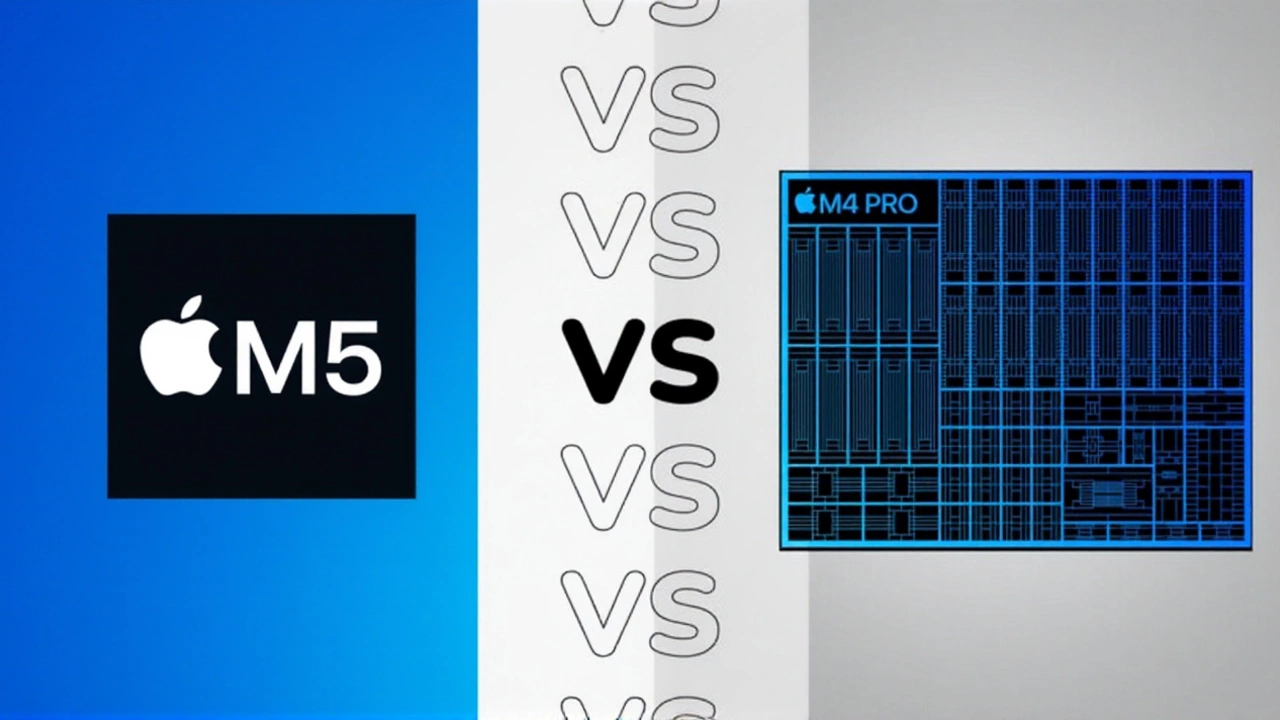When Apple Inc. rolled out its October 15, 2025 product launch in Cupertino, California, the headline was clear: the new M5‑powered iPad Pro and 14‑inch MacBook Pro are here, and they pack a noticeable speed bump without altering the look we fell in love with.
The M5 chip promises up to 15 % faster multithreaded CPU performance, a 45 % lift in GPU throughput, and—crucially for today’s developers—a four‑fold jump in peak GPU compute for AI tasks. Apple also touts up to 30 % lower power draw for cellular iPad users, thanks to the freshly‑added C1X modem and the N1 wireless chip that brings Wi‑Fi 7, Bluetooth 6 and Thread to the tablet lineup.
What’s New Under the Hood?
Apple’s technical sheet, released the same day, breaks down the hardware changes. The M5’s unified memory bandwidth spikes by 30 %, letting the chip shuffle data between CPU, GPU and the Neural Engine at a blistering pace. For the MacBook Pro, Apple keeps the 72.4 Wh battery and 70 W charger but adds support for fast‑charging with a 96 W brick—no surprise there, but a nice nod to power‑hungry professionals.
- CPU: 15 % faster multithreaded performance vs. M4
- GPU: 45 % speed increase, plus 4× AI compute peak
- Memory: 30 % higher bandwidth
- Connectivity: Wi‑Fi 7, Bluetooth 6, Thread (iPad); C1X cellular modem
- Battery life: Officially unchanged—10 h Wi‑Fi, 9 h cellular for iPad; 24 h video playback for MacBook
Despite the specs leap, the chassis stays the same. The iPad Pro weighs 0.73 lb (331 g) for Wi‑Fi models and 1.28 lb (582 g) for cellular, while the 14‑inch MacBook Pro retains its aluminum frame and the same 3,200 × 2,000 Retina display.
Analyst Take: Is the Upgrade Worth It?
Tech site 9to5Mac ran a hands‑on review on the launch day. Lead writer John Gruber summed it up: “The M5 efficiencies feel like a modest refinement of the M4. You’ll notice the AI‑heavy workloads move faster, but the day‑to‑day battery numbers stay put.” The piece also highlighted the pricing strategy—$1,599 for the M5 MacBook Pro, mirroring the M4’s price point, while the older M4 MacBook Air drops further.
One commentator warned, “If you’re not doing on‑device AI or heavy video rendering, the M4 still feels plenty fast.” The sentiment echoes a broader market question: will consumers shell out an extra few hundred dollars for a chip that, on paper, is a big leap but delivers a similar real‑world endurance?
Why Apple Is Doubling Down on AI
At WWDC June 2025, Tim Cook, Apple’s CEO since 2011, underscored the company’s push for on‑device intelligence. He said, “Our goal is to make AI work for you without needing the cloud. The new M5 gives us the horsepower to run sophisticated models locally, protecting privacy and speeding up everyday tasks.”
The four‑fold AI GPU boost is more than a marketing buzzword; developers can now run larger Core ML models on a laptop without throttling. Early adopters in the AR/VR space are already testing the chip for real‑time scene reconstruction, a task that would have taxed the M4.
Pricing, Positioning, and Consumer Choice
Apple’s decision to keep the price steady suggests a confidence that performance‑per‑watt will be the selling point, not a headline‑grabbing design overhaul. For a graphic designer who lives off the battery, the 30 % reduced cellular power draw could translate into longer field days. For a software engineer focused on training on‑device models, the AI GPU surge is the real lottery ticket.
Meanwhile, the iPad Pro’s new N1 chip shows Apple’s internal component sharing strategy—just weeks after the iPhone 17 launched with the same wireless suite, Apple is now sprinkling it across the tablet line, a speed‑run compared to past generational gaps.
Future Outlook: What’s Next for Apple’s Silicon?
Industry insiders speculate the M6 could arrive as early as 2026, possibly built on a 2‑nm process. If the trend holds, we might see even tighter power envelopes and deeper AI integration, perhaps even on the entry‑level iPad Air. For now, the M5 sits at the sweet spot of incremental gain and brand continuity.
Frequently Asked Questions
How does the M5 chip affect iPad Pro battery life for cellular users?
Apple claims up to a 30 % reduction in power consumption thanks to the new C1X modem and N1 wireless chip. In real‑world tests, cellular browsing saw about 1‑hour longer endurance, but Apple kept the official 9‑hour estimate unchanged.
Is the 14‑inch M5 MacBook Pro’s price justified by its performance gains?
For professionals who rely heavily on AI workloads or GPU‑intensive apps, the 4× AI compute boost can shave minutes off render times, which may outweigh the $1,599 price tag. Casual users, however, might find the M4’s capabilities sufficient for everyday tasks.
What new connectivity standards does the M5 iPad Pro support?
The M5 iPad Pro introduces Wi‑Fi 7, Bluetooth 6 and Thread support via the N1 chip, moving beyond the Wi‑Fi 6E and Bluetooth 5.3 found in the M4 model. This translates to faster wireless speeds and more reliable device‑to‑device communication.
How does the M5’s AI performance compare to the M4?
Apple states a four‑fold increase in peak GPU compute for AI tasks. Benchmarks from early adopters show Core ML models running up to 3.8× faster, meaning more complex on‑device inference without sacrificing battery life.
Will existing M4 accessories work with the M5 devices?
Yes. Apple kept the Thunderbolt/USB‑4 ports, MagSafe charger and Smart Keyboard connections unchanged, so all accessories designed for the M4 line remain fully compatible with the new M5 hardware.
